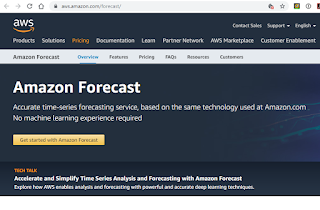MEF officially published SD-WAN Service Attributes and Services (MEF 70) -- the industry’s first global standard defining an SD-WAN service and its service attributes. The standard was officially approved by MEF members and ratified by the MEF Board of Directors at the organization’s recent Annual Members Meeting.

The SD-WAN standard describes requirements for an application-aware, over-the-top WAN connectivity service that uses policies to determine how application flows are directed over multiple underlay networks irrespective of the underlay technologies or service providers who deliver them.
MEF 70, among other things, defines:
MEF already has begun work on the next phase of SD-WAN standardization – MEF 70.1 – that will be of high interest to many enterprises. This work includes defining:
“Verizon is pleased to support MEF’s industry-leading SD-WAN standardization work. SD-WAN is the way to interface policy with an intelligent software defined network, and standardization makes it easier for integration to work across multiple types of underlying transport services. What that means for our end customers is it lets them get a better overall experience relative to their applications, with support for a broader range of use cases, guaranteed service resiliency, and improved service capabilities in an always on, always connected world,” stated Shawn Hakl, Senior Vice President Business Products, Verizon.
In addition, MEF remains on track to launch its MEF 3.0 SD-WAN Certification pilot program in 4Q 2019. This certification will test a set of service attributes and their behaviors defined in MEF 70 and described in detail in the upcoming MEF 3.0 SD-WAN Certification Test Requirements (MEF 90) document.
https://wiki.mef.net/pages/viewpage.action?pageId=89003131

The SD-WAN standard describes requirements for an application-aware, over-the-top WAN connectivity service that uses policies to determine how application flows are directed over multiple underlay networks irrespective of the underlay technologies or service providers who deliver them.
MEF 70, among other things, defines:
- Service attributes that describe the externally visible behavior of an SD-WAN service as experienced by the subscriber.
- Rules associated with how traffic is handled.
- Key technical concepts and definitions like an SD-WAN UNI, the SD-WAN Edge, SD-WAN Tunnel Virtual Connections, SD-WAN Virtual Connection End Points, and Underlay Connectivity Services.
- Enabling a wide range of ecosystem stakeholders to use the same terminology when buying, selling, assessing, deploying, and delivering SD-WAN services.
- Making it easier to interface policy with intelligent underlay connectivity services to provide a better end-to-end application experience with guaranteed service resiliency.
- Facilitating inclusion of SD-WAN services in standardized LSO architectures, thereby advancing efforts to orchestrate MEF 3.0 SD-WAN services across automated networks.
- Paving the way for creation and implementation of certified MEF 3.0 SD-WAN services, which will give users confidence that a service meets a fundamental set of requirements.
MEF already has begun work on the next phase of SD-WAN standardization – MEF 70.1 – that will be of high interest to many enterprises. This work includes defining:
- Service attributes for application flow performance and business importance.
- SD-WAN service topology and connectivity.
- Underlay connectivity service parameters.
- Application security for SD-WAN services.
- Intent-based networking for SD-WAN that will simplify the subscriber-to-service provider interface.
- Information and data modeling standards that will accelerate LSO API development for SD-WAN services.
“Verizon is pleased to support MEF’s industry-leading SD-WAN standardization work. SD-WAN is the way to interface policy with an intelligent software defined network, and standardization makes it easier for integration to work across multiple types of underlying transport services. What that means for our end customers is it lets them get a better overall experience relative to their applications, with support for a broader range of use cases, guaranteed service resiliency, and improved service capabilities in an always on, always connected world,” stated Shawn Hakl, Senior Vice President Business Products, Verizon.
In addition, MEF remains on track to launch its MEF 3.0 SD-WAN Certification pilot program in 4Q 2019. This certification will test a set of service attributes and their behaviors defined in MEF 70 and described in detail in the upcoming MEF 3.0 SD-WAN Certification Test Requirements (MEF 90) document.
https://wiki.mef.net/pages/viewpage.action?pageId=89003131















